
Ten-Cent Jefferson Bank Notes
The Secret Mark and the Reengraved Design
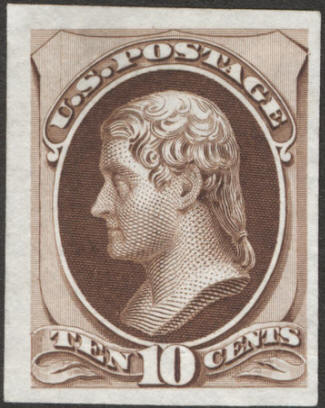
Scott 150P3 - National Printing
Original Design - Proof on India
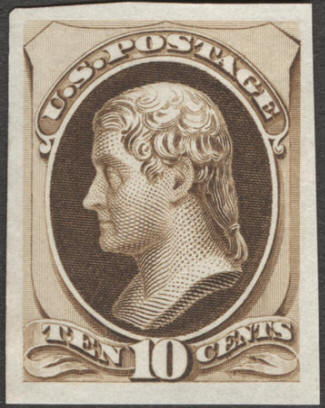
Scott 161P3 - Continental Printing
With Secret Mark - Proof on India
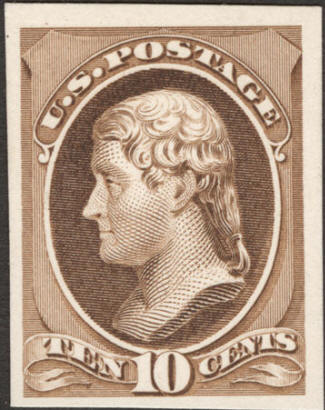
Scott 209P4 - American Printing
Reengraved Design - Proof on Card franck muller replica watches
Closeup of the Secret Mark
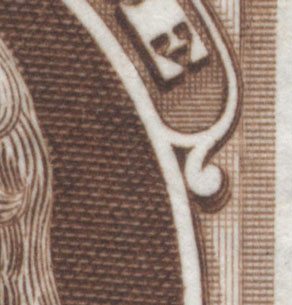
Scott 139, 150, 187 and 209 - No secret mark
There is no semi-circle in the ball at the end of the right hand scroll
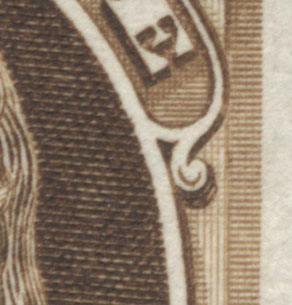
Scott 161 and Scott 188 - With Secret Mark
There is a semi-circle in the ball at the end of the right hand scroll
Comparison of the Frame Lines of the Original & Re-engraved 10?¢ Bank Notes
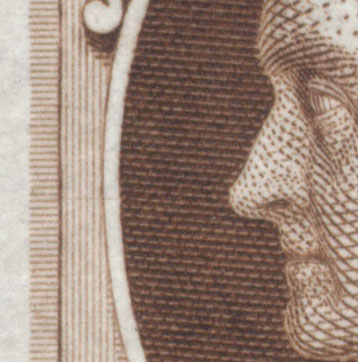
Scott 139, 150, 161, 187 and 188 - Original Die
There are five fine lines of shading between
the portrait oval and the frame line
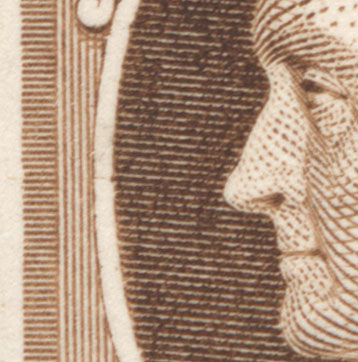
Scott 209 - Rengraved Design
There are four heavier lines of shading between
the portrait oval and the frame line
Follow these steps in the identification of your ten cent Bank Notes:
You will need to check for the secret mark, the number and strength of the vertical lines of shading at left and the type of paper . If the stamp has only four srong vertical lines of shading between the frame and the portrait oval the stamp is automatically Scott 209, the most common ten cent Bank Note.
If it has five weaker vertical lines of shading between the frame and the portrait oval, check the paper type. If it was printed on "hard white" paper, it is either the National or Continental Bank Note printing. If it was printed on "soft porous" paper, it is one of the American Bank Note printings.
If it was printed on the soft paper and has five weak lines you must check for the secret mark. If the stamp has the secret mark it is Scott 188. If it does not have the secret mark it is Scott 187.
If it was printed on hard paper, you must check for the secret mark. If the stamp has the secret mark it is the Continental printing, Scott 161. If it does not have the secret mark and was printed on the hard paper, it is the National printing and you must check for grill. If the stamp has a genuine grill, it is Scott 139. If it does not have a grill it is Scott 150.
Audemars Piguet Replica Watches
There are some varieties of these stamps. The re-engraved stamp has a blackish brown shade and is listed as Scott 209b. This is a very distinct shade, almost black, not the dark brown with which it is often confused. The National printings are known from a pale to a dark shade of brown or yellowish brown. The grill is sometimes found split, doubled and as an end-roller grill. A double transfer is known on the stamp without grill.
The Continental stamp is known on ribbed and silk papers, as well as on double paper. It is known with double transfer and with grill. There is also an imperforate between variety with vertical perforations missing. This variety must be collected as at least a side-by-side pair and there can be no blind perfs between the stamps.
The original design 10?¢ American Bank Note stamps are known setenant, that is one stamp without a secret mark next to one with a secret mark. The American stamp with secret mark is known in the black brown shade. Cracked plate and double transfer varieties are known as well. The American stamp without secret mark is known on double paper and with double transfer.
The re-engraved stamp is known in a variety of shades, from pale to dark brown, including yellow-, orange-, purple- and olive- browns. The black brown as mentioned is a very distinct shade and has its own Scott listing.
The National and re-engraved American stamps are known with the "SPECIMEN" overprint. The re-engraved American stamp is known with the "SAMPLE." overprint.
The Special Printings, Scott 172 and Scott 197, are mentioned here merely for completeness. Only 180 copies, total, of Scott 172 and Scott 197 were sold, and they were never issued for postal use, rather for collectors only. We occasionally see uncertified copies of these stamps offered for sale at ridiculously low prices. You can rest assured that the stamp being offered is not genuine. These stamps are so rare they seldom come up for sale except in the sale of a major U.S. Collection.





